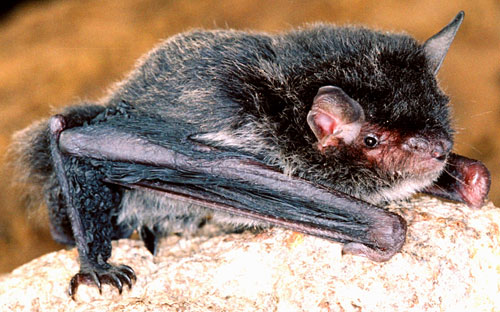Myotis muricola
Nepalese Whiskered Myotis
Shandi Shu'erfu
Morphological description Life history Distribution Habitat Roost sites and roosting patterns Emergence and flight pattern Foraging behaviour Echolocation calls Status and protection
Photo by C.T. Shek, Hong Kong.
This species complex is highly likely to include cryptic species, and confusion with Myotis ater also occurs (Simmons 2005).
Morphological Description
·A small Myotis with forearm length 31-37 mm (Smith & Xie 2008).
·Dorsal fur dark brown, with dark roots and paler tips. Can be lighter ventrally.
·Feet small with wing membrane attached at base of toes. Middle upper premolar small and often slightly intruded from the toothrow. Upper canine much longer than posterior upper premolar (Francis 2008).
Life history
· Little known
Distribution
Wide ranging in Indo-Malayan Region, including most of south east Asia, east India, Indonesia and the Philippines. Found in Taiwan and central southern China. Three subspecies described: M. m. caliginosus from Xizang; M. m. latirostris from Taiwan and M. m. moupinensis from Sichuan and Yunnan (Smith & Xie 2008).
Habitat
·Found in many habitats including scrub and secondary growth (Smith & Xie 2008).
Roost sites and roosting behaviour
· Roosts in furled central leaves of bananas and in vegetated areas near cave entrances (Francis 2008).
· Emergence and flight pattern
·Forages early in the evening. can fly high and relatively fast (Smith & Xie 2008).
Foraging behaviour
· Not known.
Echolocation calls
· Unknown.
Status and protection
·Considered RL-VU A1c in China. Globally Least Concern, population stable (IUCN 2008).
